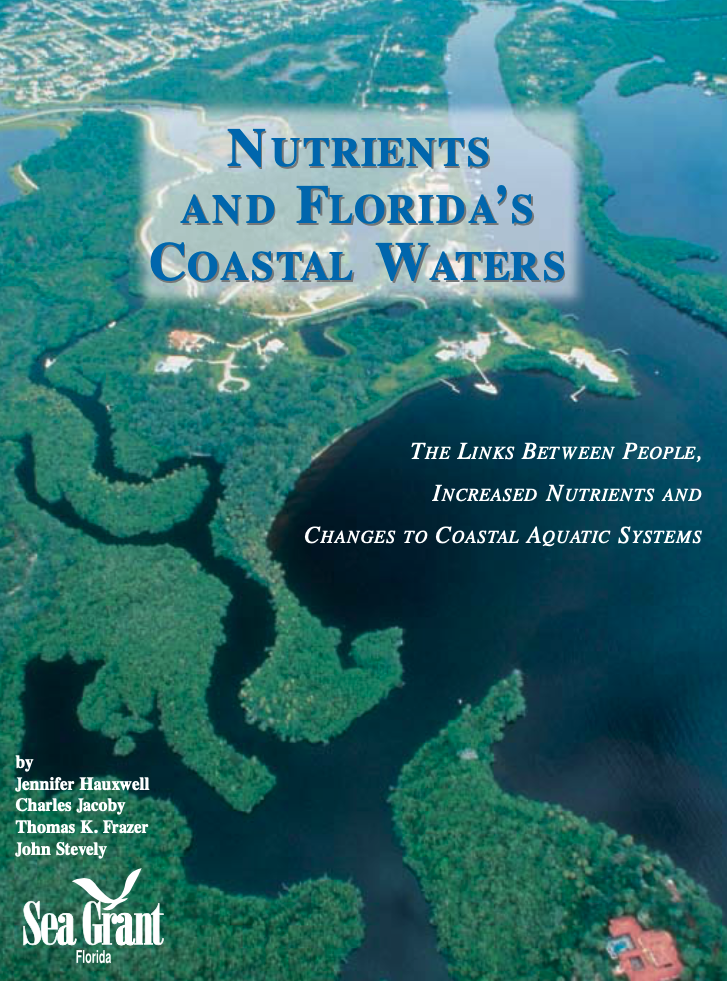Nitrogen and phosphorus are the primary macronutrients that often limit algal and plant growth in natural, low-nutrient or “oligotrophic” aquatic ecosystems. However, in nutrient over-enriched or “eutrophic” aquatic ecosystems, excess nitrogen and phosphorus may support harmful algae blooms and loss of seagrasses and coral reefs.

Nutrients and Florida’s coastal waters
Jennifer Hauxwell, Charles Jacoby, Thomas K. Frazer, John Stevely
Further Research
- Anderson et al. 2002. Harmful Algal Blooms and eutrophication: Nutrient sources, composition, and consequences.pdf
- Barile. 2018. Widespread sewage pollution of the Indian River Lagoon system, Florida (USA) resolved by spatial analyses of macroalgal biogeochemistry.
- Brand et al. 2006. Long-term increase in Karenia brevis abundance along the Southwest Florida Coast.
- Greening et al. 2006. Toward reversal of eutrophic conditions in a subtropical estuary: Water quality and seagrass response to nitrogen loading reductions in Tampa Bay, Florida, USA.pdf
- Howarth et al. 2000. Nutrient Pollution of Coastal Rivers, Bays, and Seas.pdf
- Lapointe et al. 2014. Evidence of sewage-driven eutrophication and harmful algal blooms in Florida’s Indian River Lagoon.pdf
- Lapointe et al. 2017. Septic systems contribute to nutrient pollution and harmful algal blooms in the St. Lucie Estuary, Southeast Florida, USA.pdf
- Lapointe. 1999. Simultaneous top-down and bottom-up forces control macroalgal blooms on coral reefs (Reply to the comment by Hughes et al.).pdf
- Paerl et al. 2008. Co-occurence of dinoflagellate and Cyanobacteria harmful algal blooms in southwest Florida coast waters: dual nutrient (N and P) input controls.pdf
- Paerl et al. 2018. It takes two to Tango: when and where dual nutrient (N&P) reductions are needed to protect lakes and downstream ecosystems.
